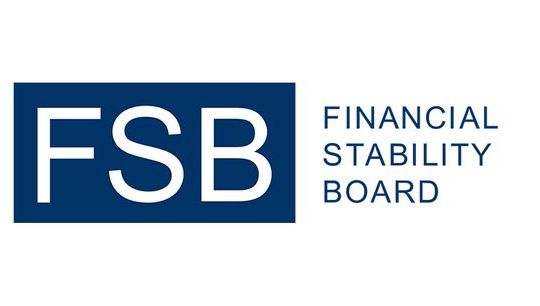Credit Funds – The Growth of an Asset Class
By Nicolas Grenie, SS&C Technologies
Published: 21 March 2019
Fund managers diversify their strategies to reduce risk and to deliver new and reliable sources of returns for end clients. As more institutional and alternative asset managers acknowledge the difficulties presented by today’s market conditions, such as continued low interest rates and increased volatility, some are making the transition into new asset classes.
Many managers are actively moving to private debt and direct lending, issuing loans to underfunded small-to-medium-sized enterprises (SMEs) that are excluded from traditional bank financing.
This deviation from conventional investment brings both opportunities and challenges. These new investment avenues may offer reasonable returns and have tacit regulatory endorsement, but for firms who have historically made their clients’ profits through traditional asset and derivative investments, the swing to such complex debt products cannot be made without major adjustment to their processes. In this paper, we will explore why a growing number of leading fund managers are engaging expert third-party loan service providers to reduce operational risk and improve agility and time to market.
Why the change in course?
For several years, active managers have struggled to outperform benchmarks, with one in three large cap managers failing to beat the S&P 500 in 2016.1 While performance improved the following year, it remained relatively low with just 43 percent outperforming passive peers.2 Although volatility helped active firms in 2018, they are still facing pressure from relatively less expensive passive managers, some of whom have even launched zero-fee products.3 This is forcing active managers to scope out new strategies beyond conventional stock-picking.
Similarly, hedge fund performance following the financial crisis has yet to reach its pre-2008 zenith, and while 2017 was the industry’s best year return-wise since 2013,4 the results in 2018 appear to be more mixed.5 This is partly because assets in the US$3.23 trillion industry6 have ballooned and managers who were once able to pinpoint interesting investment opportunities are now being crowded out of those trades.
Returns are falling, and benchmark targets are not being met. Firms are working hard to cultivate existing clients and win new mandates, often through generous fee discounting. Despite this, hedge funds – just as traditional long-only managers – face competition from lower-cost smart beta, index trackers and hedge fund replicator strategies (i.e. products that track hedge funds). This is forcing firms to seek out new sources of alpha.
For the US$2.83 trillion private equity industry, performance – which has consistently exceeded that of public markets and other asset classes – is currently not a problem. Client satisfaction in private equity is phenomenally high, with 93 percent of investors telling data provider Preqin that returns in 2017 had met or exceeded their expectations. More than half said they would grow their allocations in the asset class in the long term.7
The principal dilemma facing the private equity market is the risk of overheating8 fuelled by sizeable deal multiples, large leverage ratios and extraordinarily high dry powder volumes.9 With too many private equity firms chasing after too few deals,10 buyouts are routinely concluding at double-digit multiples of EBITDA, valuations which many feel cannot be propped up indefinitely. Conscious of this, more private equity firms are edging away from buyouts and are investing in different asset classes.
Fund managers embrace loan origination
Loan origination and direct lending to SMEs is a growing strategy across the asset management industry. US$56.7 billion was raised in 2017, more than double the amount in 2016,11 bringing total assets under management (AuM) to almost $1 trillion.12 While returns have dropped recently,13 internal rate of return (IRR) is still hovering between five and 10 percent as the average margins on loans stands at around 600bps to 1500bps.14
Performance advantages are not the only driver of increased flows into loan origination products. Low rates have made banks reluctant to provide loans, and regulators – both intentionally and unintentionally – have had a material impact. Basel III assigns SME loans a higher risk rating, forcing banks to hold more capital on their balance sheets when providing financing to such companies. This has led to a deprivation of bank financing which has prompted SMEs to explore other funding channels, and asset managers have proven to be willing backers.
Local regulators in markets such as France and Italy have also been supportive of measures aimed at loosening SME dependency on bank financing by easing limitations that had previously prevented or heavily restricted non-banks from participating in direct lending activities.15 In addition, pan-EU initiatives such as the European Long-Term Investment Fund (ELTIF) have played a positive role, creating an augmented regulatory structure for asset managers authorized under AIFMD to originate loans across the EU.16
Building the internal infrastructure
The purchase and/or issuance of loans requires asset managers to rethink their operations and middle-office processes. It demands significant investment in technology systems and the appointment of experienced personnel who have a deep understanding of credit and borrower risk. As alternative and traditional asset managers embrace these new strategies and debt instruments, they are fast realizing their existing processes, which have served them well so far, are in need of an urgent overhaul.
Research conducted by the Alternative Credit Council (ACC), an AIMA-affiliated offshoot and global body representing the interests of private credit and direct lending managers, found 45 percent of respondents involved in the loans space said regulatory and client reporting was their biggest challenge.17 In many cases, the regulators themselves are not ready for the asset class, and some expert loan service providers like SS&C are working alongside regulators to educate them and ensure meaningful and applicable regulation transpires. Asset managers that are not in this position may later be caught off guard as regulation ramps up.
Another 45 percent of managers said in the ACC study that limitations in their existing technology made it difficult to accurately track loans,18 a problem which creates significant investment and operational risks. These assets also have complex settlement processes which require a deep understanding of the industry.
As volumes grow, legacy technologies will struggle with the complexity of this new asset class. Given the pace at which technology is advancing, building an internal system capable of mastering administration, valuation and reporting of loans in-house is expensive and notoriously difficult to future-proof. Many fund managers simply do not have the time to wait for such development work to take place. Furthermore, at a time when regulatory compliance costs and client reporting requests are consuming firms’ resources, managing loan administration internally is arguably an unnecessary add-on.
This realization is prompting more fund managers to offload some or all of their loan administration activities to third parties, although the overall rates of outsourcing remain low, at least when benchmarked against other fund subsets such as hedge funds. The ACC study, for example, found 48 percent of managers outsourced loan administration while only 30 percent contracted out their regulatory reporting to third-party vendors.19
As the cost and complexity of performing middle- and back-office functions becomes increasingly apparent, managers will look to service providers for support with their loan administration. By outsourcing day-to-day activities and administration, firms can direct resources and capital to revenue-generating processes.
Footnotes
1 CNBC (April 12, 2017) Bad times for asset managers: Almost none have beaten the market over the past 15 years
2 Mercer Capital (2018) Value Focus: Asset Management Industry
3 Financial Times (August 2, 2018) Asset manager shares dive after no-fee fund launch
4 Financial Times (January 9, 2018) Hedge funds produce best returns in four years
5 Opalesque (November 2018) https://www.opalesque.com/671570/Performance_of_hedge_fund_strategies_ranges_from157.html
6 Hedge Fund Research (July 19, 2018) Hedge fund assets eclipse record level for eighth consecutive quarter despite mixed capital flows
7 Preqin (2018) 2018 Private equity and venture capital Report
8 PE News (June 4, 2018) Half of investors think the buyout market is overheating - Coller
9 BCG (April 25, 2018) Private equity is hot but not overheating
10 PE News (June 4, 2018) Half of investors think the buyout market is overheating - Coller
11 Financial Times (March 6, 2018) Fund houses pile into direct lending as banks retreat
12 Funds Europe (May 18, 2018) Growing private credit industry suffers admin problems
13 Financial Times (March 6, 2018) Fund houses pile into direct lending as banks retreat
14 Kramer Levin (April 2, 2018) Direct lending in the EU: Regulations on loan origination create high return opportunities for asset managers
15 Kramer Levin (April 2, 2018) Direct lending in the EU: Regulations on loan origination create high return opportunities for asset managers
16 Kramer Levin (April 2, 2018) Direct lending in the EU: Regulations on loan origination create high return opportunities for asset managers
17 ACC – Enhancing the loan administration function
18 ACC – Enhancing the loan administration function
19 ACC – Enhancing the loan administration function








